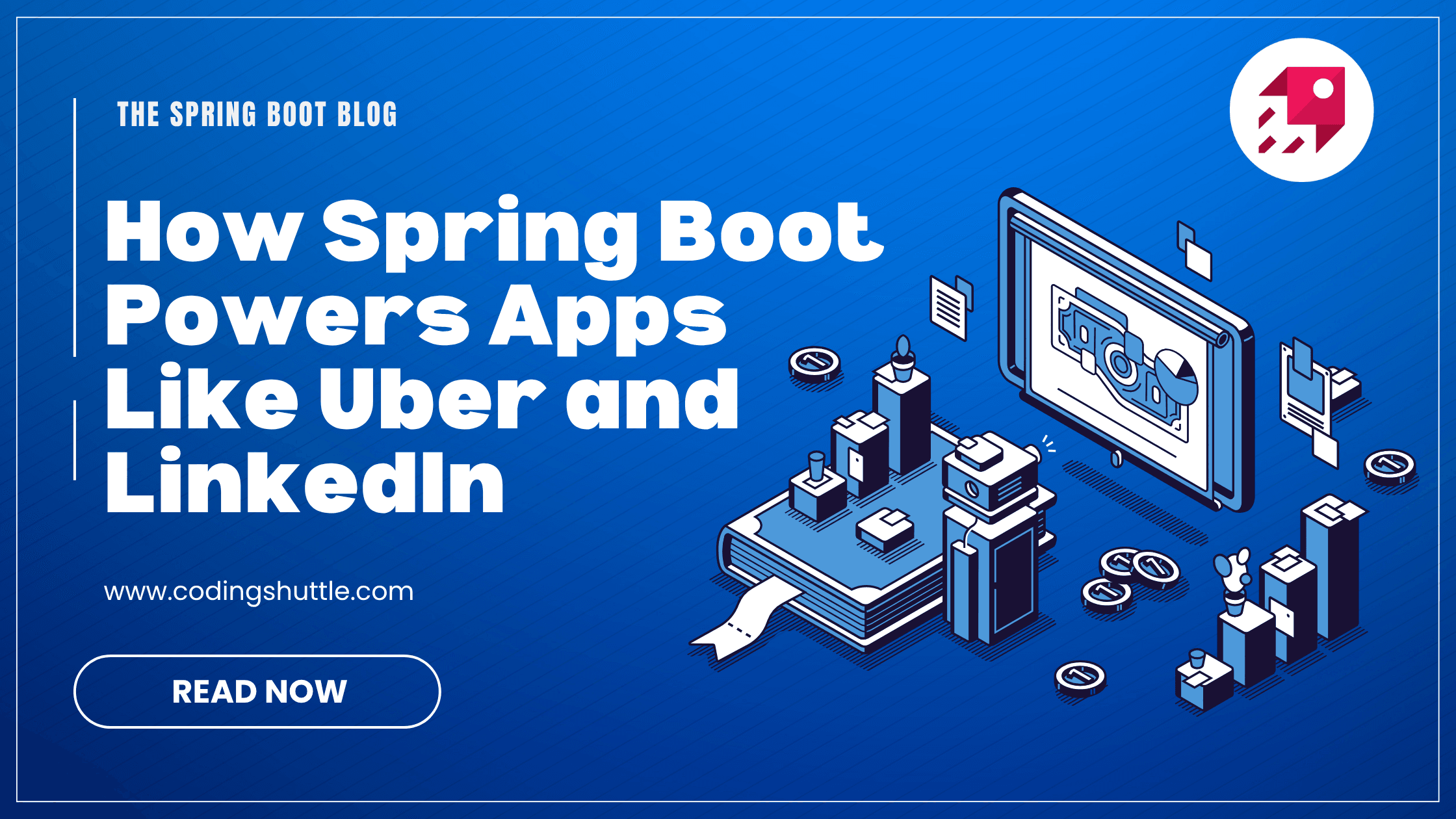
How Spring Boot Powers Applications Like Uber and LinkedIn | Real-World Examples
Discover how Spring Boot can power apps like Uber and LinkedIn. Learn real-world use cases for ride-hailing platforms, networking apps, and scalable backend systems.
Shreya Adak
December 07, 2024
5 min read
Spring Boot is one of those frameworks that can handle almost anything you throw at it from small side projects to powering massive, secure, and super-efficient backend systems. Big names like Uber and LinkedIn use it to keep their apps running smoothly at scale.
In this article, I will share how Spring Boot could fit into something like a Uber project or even a LinkedIn style platform.
Uber Like Application#
1. Ride Requests & Matching#
In any ride-hailing app, the first thing a user does is request a ride. With Spring Boot, creating a REST API to handle these requests is super quick.
When a rider sends a request, the API instantly checks for available drivers nearby and matches them using your custom matching logic (like shortest distance or driver rating).
The best part is that Spring Boot handles all the boring setup, so you just focus on the business logic for example, “find the 5 closest drivers within 3 km and assign one instantly.” This makes the whole process fast and reliable.
2. Real-Time Tracking#
Nobody likes waiting without knowing where their ride is. That’s why real-time tracking is so important.
With Spring Boot and WebSockets (or STOMP over Spring Messaging), you can push live location updates directly to the rider’s app.
So instead of the app constantly asking “where’s my driver?”, the driver’s location is pushed instantly from the server to the user in real time. This keeps the app snappy and reduces server load.
3. Payment Processing#
Handling money is serious business, and you can’t cut corners here.
With Spring Security, you can ensure all payment-related APIs are fully protected. Then, by integrating with payment gateways (like Stripe, Razorpay, or PayPal), you can securely process transactions without storing sensitive card details yourself.
Spring Boot makes this easier by giving you clean integration options and security features out of the box so your payment flow remains safe and smooth for both riders and drivers.
4. Driver Management#
Behind every ride-hailing app is a fleet of drivers, and managing them efficiently is crucial.
With Spring Boot and Spring Data JPA, you can quickly build CRUD APIs to register new drivers, update their details, and track their status (available, busy, offline).
Since JPA handles most of the SQL work for you, your code stays clean, and database operations remain simple even when dealing with thousands of drivers.
5. Analytics & Insights#
Numbers don’t lie they tell you how your business is really doing.
With Spring Boot Actuator and Micrometer, you can collect data like total rides completed, revenue generated, and driver performance metrics.
This data can then be sent to monitoring tools like Prometheus or Grafana, giving you beautiful dashboards and insights to improve decision-making.
LinkedIn-Style Networking Platform#
1. User Profiles#
Every networking platform starts with profiles. With Spring Data JPA, you can easily store all the important user details like name, headline, skills, education, work experience, and even profile pictures in the database.
When someone opens a profile, JPA helps fetch the data instantly without you writing long SQL queries. Updating a profile is just as smooth whether it’s adding a new skill, changing a profile picture, or updating the “About” section, JPA makes the interaction with the database quick and reliable. This keeps the user experience fast and seamless.
2. Connections & Messaging#
The whole point of a networking platform is to connect people. With Spring Boot REST APIs, you can build endpoints to send connection requests, accept them, or decline them. Once two users are connected, you can use WebSockets to enable real-time messaging.
That means when someone sends a message, it appears instantly in the other person’s chat window without refreshing the page.
This setup works perfectly for quick back-and-forth conversations, making the platform feel alive and engaging, just like modern chat apps.
3. Job Postings#
Helping people find jobs is often a core feature in a professional networking app. By using a microservices architecture, you can build a dedicated job posting service that handles everything from creating a job listing to managing applications.
Companies can log in, post their openings, edit them if needed, and review applicants. On the user side, they can search for jobs, apply directly, and track their application status.
All through secure APIs that ensure sensitive data stays protected. Separating this into a microservice also makes it easier to scale when job activity spikes.
4. Feed & Recommendations#
The feed is the heartbeat of a networking platform. Using Spring Batch, you can process large volumes of data in the background to personalize each user’s feed.
This might include posts from their connections, trending articles in their industry, or updates from companies they follow. At the same time, recommendation algorithms can suggest new people to connect with based on shared interests, mutual connections, or job history.
Since Spring Batch handles bulk processing efficiently, you can keep the feed relevant and updated without slowing down the rest of the app.
5. Search & Filters#
Search is one of the most used features in a platform like this, and speed is everything. By combining Spring Boot with Elasticsearch, you can build a lightning-fast search engine that returns results in milliseconds.
Users can type in keywords to find profiles, jobs, or posts, and use filters for things like location, skills, industry, or experience level.
Even if your database has millions of records, Elasticsearch makes it feel instant. This makes discovering opportunities and people smooth and frustration-free.
Conclusion#
Spring Boot isn’t just a “Java framework”, it is a complete toolkit that can scale from a side project to the backbone of global platforms like Uber and LinkedIn. Its auto-configuration, microservices support, and production-ready tools mean you can focus on business logic while Spring Boot handles the heavy lifting.
Want to Master Spring Boot and Land Your Dream Job?
Struggling with coding interviews? Learn Data Structures & Algorithms (DSA) with our expert-led course. Build strong problem-solving skills, write optimized code, and crack top tech interviews with ease
Learn more

